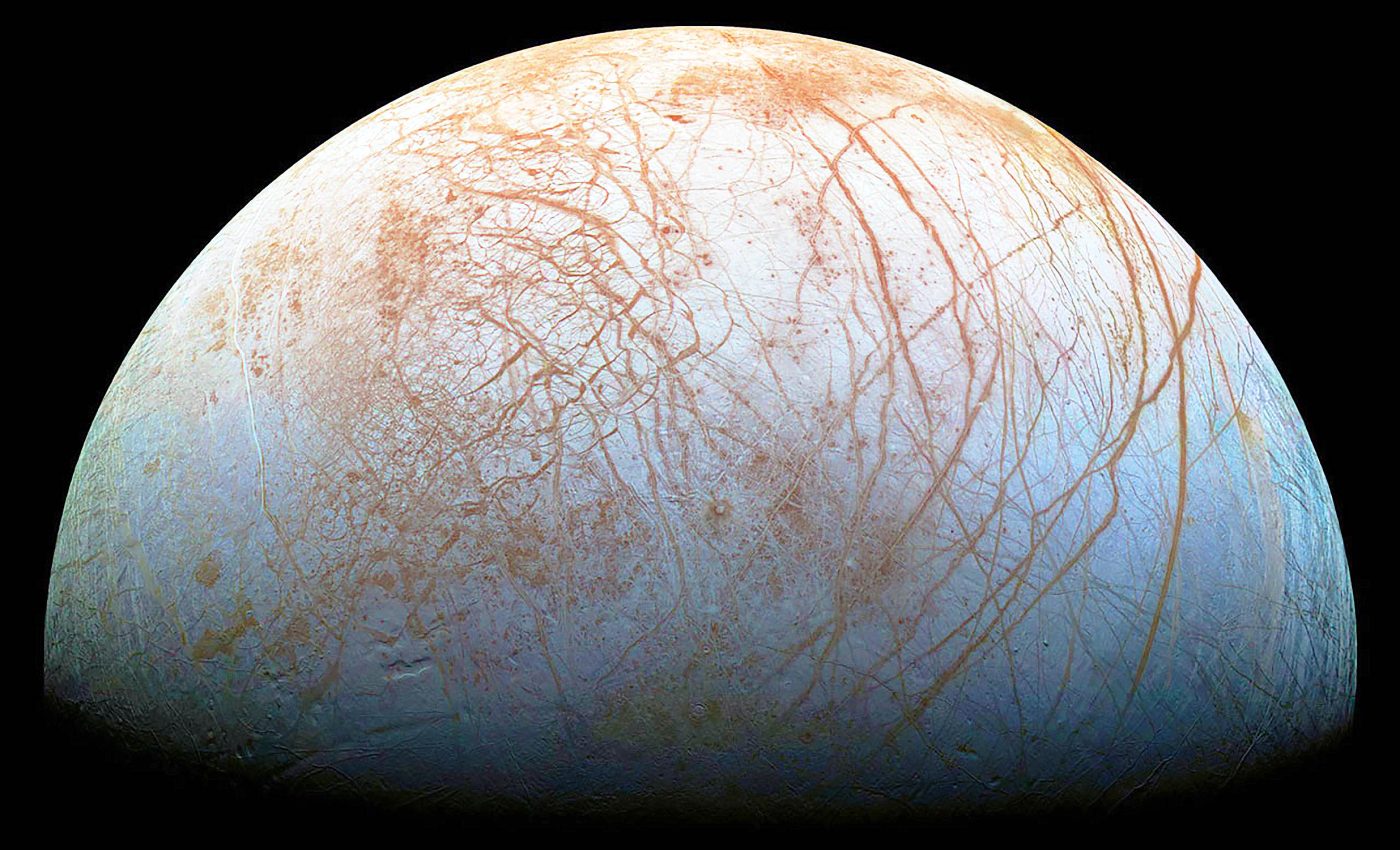
NASA is set to find out this week if life exists in the alien ocean of Jupiter's moon Europa
NASA is gearing up for an ambitious mission that could reshape our understanding of life in the universe. The Europa Clipper spacecraft is preparing to launch this week, aiming to discover if the hidden ocean beneath Jupiter’s moon Europa holds the ingredients necessary for life.
Scheduled to lift off no earlier than Monday, October 14, the Europa Clipper will embark on its journey from Launch Complex 39A at NASA’s Kennedy Space Center in Florida.
The spacecraft will ride atop a SpaceX Falcon Heavy rocket, marking a significant milestone in space exploration.
Why Europa matters
Steve Vance, an astrobiologist and geophysicist on the Europa Clipper science team at NASA’s Jet Propulsion Laboratory (JPL), shared his excitement about the mission.
“Non-icy materials on the surface could get moved into deep interior pockets of briny water within the icy shell,” he said. “Some might be large enough to be considered lakes, or at least ponds.”
Europa, one of Jupiter’s largest moons, has captivated scientists for decades. Beneath its thick ice crust lies a vast ocean of liquid water — more than all of Earth’s oceans combined.
The big question is whether this ocean could harbor life. The Europa Clipper mission aims to find out by investigating the moon’s potential habitability.
Long and strategic flight path
To maximize the mission’s success, Europa Clipper will follow an elongated, looping orbit around Jupiter.
This trajectory minimizes exposure to Jupiter’s intense radiation while allowing the spacecraft to swoop in for close passes — 49 flybys in total — by Europa.
During these encounters, the spacecraft will gather valuable data about the moon’s surface and subsurface.
Life beneath Europa’s icy shell?
One of the mission’s main objectives is to understand how thick Europa’s icy shell is and what’s happening beneath it.
Using a suite of sophisticated instruments, scientists hope to “see” through the ice and gain insights into the underlying ocean.
They’ll also search for materials on the surface that might have come from below, look for organic compounds — the building blocks of life — and sample any gases escaping from the moon.
High-resolution images are crucial for studying Europa’s geology. The Europa Imaging System (EIS) is designed for this task.
“The EIS imagers will give us incredibly high-resolution images to understand how Europa’s surface evolved and is continuing to change,” said Dr. Morgan Cable, a planetary scientist at JPL and member of the Europa Clipper team.
These images will help researchers identify features like cracks, ridges, and possibly active plumes.
Searching for water plumes
In 2005, NASA’s Cassini mission spotted giant plumes of water vapor erupting from Saturn’s moon Enceladus. Scientists suspect Europa might exhibit similar activity.
The Europa Ultraviolet Spectrograph (Europa-UVS) will search for these water plumes and analyze any material venting into space. Detecting plumes would offer a direct glimpse into the subsurface ocean.

Even if Europa doesn’t have active plumes, the spacecraft is equipped to study tiny amounts of gas and dust ejected from the surface. Instruments like MASPEX (Mass Spectrometer for Planetary Exploration/Europa) and SUDA (Surface Dust Analyzer) will collect and analyze these particles.
“The spacecraft will study gas and grains coming off Europa by sticking out its tongue and tasting those grains, breathing in those gases,” said Dr. Morgan Cable.
Investigating the magnetic field
To learn more about the ocean’s depth and salinity, the mission will measure Europa’s induced magnetic field using the Europa Clipper Magnetometer (ECM).
This data, combined with measurements from the Plasma Instrument for Magnetic Sounding (PIMS), will help scientists understand the moon’s internal structure and the properties of its ocean.
Peering into the ice
The Radar for Europa Assessment and Sounding to Near-surface (REASON) instrument will peer up to 18 miles into Europa’s ice shell.
By sending radar waves into the ice, REASON can map its layers and possibly detect pockets of water. This information is vital for assessing whether the ice shell itself could be a habitable environment.
Using data collected during the mission, scientists will create computer models of Europa’s interior.
Steve Vance explained, “Using the data gathered to inform extensive computer modeling of Europa’s interior structure also could reveal the ocean’s composition and allow estimates of its temperature profile.”
Understanding these factors is key to determining the moon’s potential to support life.
Quest for life on Europa and beyond Earth
The Europa Clipper mission represents a significant step in our quest to find life beyond our planet.
Discovering even the simplest life forms on Europa would have profound implications for science and philosophy.
It would suggest that life might be common in the universe, especially in environments once considered inhospitable.
As with any pioneering mission, Europa Clipper is expected to raise new questions.
“It’s almost certain Europa Clipper will raise as many questions or more than it answers — a whole different class than the ones we’ve been thinking of for the last 25 years,” Vance said.
The findings could pave the way for future missions, perhaps even landing probes on Europa’s surface.
—–
Like what you read? Subscribe to our newsletter for engaging articles, exclusive content, and the latest updates.
Check us out on EarthSnap, a free app brought to you by Eric Ralls and Earth.com.
—–














